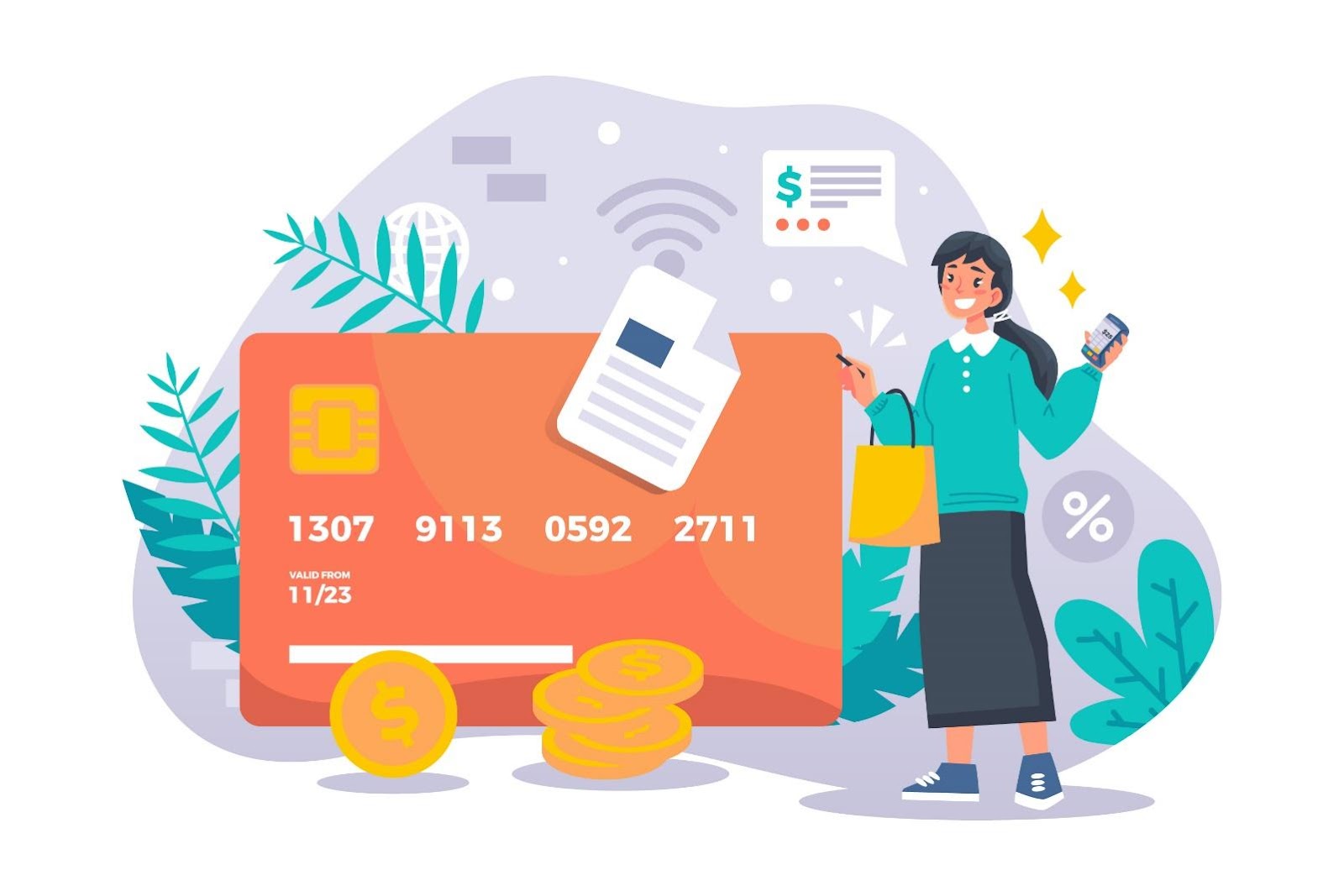Greenvissage explains, Is the Credit Cards business profitable for the banks?
There’s a common misconception that credit cards are a risky business for banks in India. An industry insider with over 10 years of experience sheds light on why that’s not quite true. While credit card losses might seem high in absolute terms, they need to be seen in context with the overall growth of the industry. The rise in losses simply reflects the increasing number of cards issued and higher spending by cardholders. It’s a sign of a flourishing industry, not a failing one. India’s credit card usage is low compared to other developed economies. This means there’s immense growth potential. Unlike some perceptions, Indians do rely on credit, but often through informal channels. Credit cards offer a more secure and regulated alternative.
Credit cards are one of the most profitable products banks offer. They generate significantly higher Returns on Assets compared to personal loans, car loans, or home loans. This is because they charge fees called Merchant Discount Rate (MDR) to the merchant who is receiving money from the credit card payments. This is usually 2-3% which is shared between the card issuing network, card issuing bank and the payment processing bank. Thus, banks make money for every penny spent on a credit card. SBI Card, for instance, consistently reports an ROA of 4-5%, while most banks hover around 2-3% for other credit products. News articles often focus on Gross or Net Non-Performing Assets numbers. These can be misleading as they’re influenced by various factors, including accounting practices. A better measure of default risk is Gross or Net Credit Cost expressed as a percentage.
The approval of credit cards is dependent on various factors. A low score gets you rejected, but a high score isn’t a guarantee. CIBIL is the most common credit score used, but some institutions might use others. A clean repayment record in the last 1-3 years is crucial. Defaults can lead to permanent rejection. Salaried applicants with a good score and credit history have a simpler approval process. Non-salaried applicants might face a more manual assessment, with some exceptions for professions like doctors or lawyers. Banks have specific areas where they issue cards. Bigger banks cover most of India, while smaller ones might be more restricted. Foreign banks are slowly expanding beyond major cities. Banks also share blacklists of fraudsters and money launderers. They avoid issuing cards to certain professions due to potential repayment challenges. Having multiple ongoing loans or frequent credit inquiries can raise red flags. Your spending capacity determines your credit limit. Banks consider your credit history, income (through payslips and ITR), and existing credit cards (card-on-card approach by some banks). Banks also use their scoring systems alongside CIBIL scores for a more nuanced evaluation.
References:
- Investopedia – Applying for a Credit Card: Your Odds of Being Approved
- Experian – What Happens After I Apply for a Credit Card?
- Image by pikisuperstar on Freepik
Greenvissage Explains, Why Did the US Government Ban TikTok?
The United States House of Representatives recently passed a bill aiming to force ByteDance, the Chinese owner of the popular social media app TikTok, to divest from the company. The bill, titled the Protecting Americans from Foreign Adversary Controlled Applications Act, received bipartisan support, signalling significant concerns among US lawmakers regarding national security and data privacy. The primary driver behind the push to ban TikTok stems from concerns over Chinese influence and data security. Many US legislators and the White House fear that TikTok could potentially provide a conduit for the Chinese government to access sensitive user data and influence American citizens through its algorithmic recommendations.
Despite denials from ByteDance regarding any ties to the Chinese government, suspicions persist, especially given China’s history of exerting control over domestic tech firms. The passage of the bill in the House of Representatives signifies a significant step towards potential restrictions or divestment for TikTok. However, its journey to becoming law is far from straightforward. The bill must clear the US Senate, where it faces further scrutiny and potential competition from alternative versions of the ban. Moreover, with the upcoming 2024 election year adding political complexities, the process could face delays or alterations. TikTok has vehemently denied accusations of being a national security risk, asserting its independence from the Chinese government and highlighting its efforts to safeguard user data. However, scepticism remains, fueled by past instances where Chinese-owned tech companies faced allegations of compromising user privacy.
The legislation presents a formidable challenge for Tiktok, potentially disrupting its operations and market presence, despite its efforts to assuage concerns. Should the bill progress and become law, TikTok’s future in the US could be at risk. While the legislation does not explicitly ban the app outright, it sets the stage for divestment within a stipulated timeframe. Such a scenario could disrupt the app’s functionality, limiting updates and potentially rendering it obsolete over time. This could have significant ramifications for TikTok’s extensive user base, content creators, and businesses reliant on the platform for marketing and commerce. The US’s move to ban TikTok reflects broader international scrutiny of the app’s operations and underscores growing concerns over data privacy and national security in the digital age. Other countries, including India and Nepal, have already implemented bans on TikTok, citing similar concerns. Additionally, the tech industry’s response to the situation will be closely watched, as it navigates the delicate balance between innovation, regulation, and geopolitical tensions.
References:
- AlJazeera – Why has the US passed a bill to ban TikTok, and what’s next?
- Financial Times – What’s next for TikTok and its US users after House approves ban
- Image by vectorjuice on Freepik
Greenvissage explains, Why are Private Hospitals worried about Price Transparency?
A recent landmark decision by the Supreme Court has jolted the Indian healthcare industry, shining a spotlight on the contentious issue of price transparency in hospitals. This ruling, aimed at rectifying long-standing grievances over price inconsistencies and soaring medical expenses, has thrust hospitals, particularly private ones, into a precarious position. The origins of this dilemma traced back to the Clinical Establishments Act of 2010, crafted to regulate clinical facilities, uphold healthcare standards, and tackle escalating medical costs. Despite being codified in law, the Act’s mandate to standardize medical procedure rates languished without implementation for over a decade. The Supreme Court’s intervention follows a Public Interest Litigation (PIL) filed by the Veterans Forum for Transparency in Public Life, shedding light on governmental laxity in enforcing the Act’s provisions. Scrutiny revealed glaring disparities in treatment expenses between public and private hospitals, prompting the court to question the absence of specified standard rates, as mandated by law.
The implications of the Supreme Court’s decree are profound, particularly for private hospitals accustomed to setting their pricing structures. The court’s admonition to enforce Central Government Health Scheme (CGHS) rates, notably lower than prevailing private hospital charges, has instilled unease within the healthcare sector. Financial experts caution that mandating CGHS rates could precipitate a substantial revenue decline for hospitals, imperilling their financial sustainability. Opponents argue that uniform rates fail to accommodate differences in operational expenses, infrastructure, and expertise levels among hospitals. They contend that premier hospitals with advanced technology and esteemed medical professionals naturally incur higher costs, warranting higher service charges. Imposing standardized rates, they argue, risks compromising healthcare quality and stifling sectoral innovation.
Conversely, advocates of price transparency assert its necessity in ensuring fair healthcare access and shielding consumers from exploitation. They argue that exorbitant medical expenses have long burdened patients, exacerbating financial hardship and dissuading many from seeking timely treatment. By mandating price transparency and rate standardization, the court aims to curb arbitrary pricing practices and enhance affordability. Nonetheless, the future of India’s healthcare industry remains uncertain. The Supreme Court’s directive has ignited debates and lobbying endeavours from various stakeholders, including hospital conglomerates, medical practitioners, and consumer advocacy groups. While the court’s intent to catalyze government action on rate standardization is evident, the practical ramifications and feasibility of such measures necessitate thorough deliberation and negotiation.
References:



